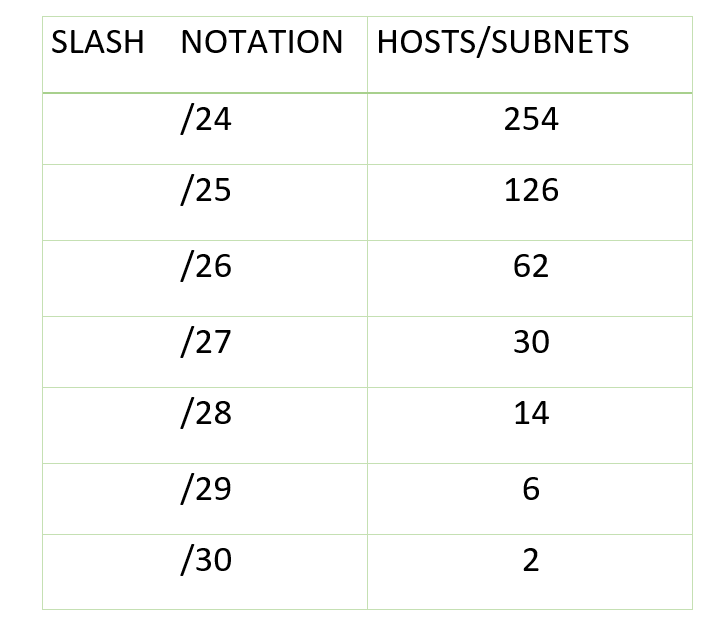What Is VLSM (Variable Length Subnet Mask)?
Table of Contents
Definition Of VLSM
VLSM, standing for Variable Length Subnet Mask, occurs when subnet design uses multiple masks in the same network. It means that more than one mask is used for various subnets of a network or a single class A, B, C.
VLSM is equivalent to subnetting subnets, which means that VLSM enables network engineers to divide the IP address space into subnet hierarchies of different sizes. So VLSM allows network engineers to create subnets with varying host counts with only small numbers of addresses being wasted.
VLSM is used to increase the availability of subnets because subnets can be variable in size. It is also defined as a subnetting process for a subnet.
Implementation Process Of VLSM
In VLSM, subnets use block sizes as required, so subnetting needs to be used multiple times.
If the administrator has the IP 192.168.1.0/24, you can assign the department’s wise IP by following these steps:
Step 1. For each segment, select the block size, which is greater than or equal to the actual requirement. The essential requirement is the sum of the host address, broadcast address, and network address. List possible subnets:

Step 2. Arrange all segments in descending order according to the block size from highest to lowest requirements.
Step 3. The available highest IP must be assigned to the highest requirement, so Sales and Purchasing receive 192.168.1.0/25.
Step 4. The next segment requires IP to handle 50 hosts. The IP subnet with network number 192.168.1.128/26 is the second-highest and can be assigned to 62 hosts.
Step 5. The next IP subnet 192.168.1.192/27 meets the account department’s requirements because it has 30 valid host IP that can be assigned to 26 computers.
Step 6. The last segment needs 5 valid host IP, and the subnet 192.168.1.224/29 meets the subnet, with a mask of 255.255.255.248 as required.
VLSM VS FLSM
- Subnets: In VLSM, subnets are variable in size with a variable number of hosts, making the IP addressing more efficient. But in FLSM, all subnets are equal in size with an equal number of hosts.
- Waste of IP addresses: VLSM wastes fewer IP addresses than FLSM.
- The corresponding IP addresses: VLSM is the best choice for public IP addresses, while FLSM is the first option for private IP addresses.
- Usage of subnet mask: VLSM uses various subnet masks, while FLSM uses the same mask.
- Configuration and management: VLSM is simple in configuration and management, but FLSM is complicated.
- Routing protocols: VLSM supports classless routing protocols, while FLSM supports both classless and classful routing protocols.
Conclusion
VLSM is a critical technology in modern network design. After reading this article, you must have a general understanding of VLSM, including its definition, implementation procedures, and the difference between VLSM and FLSM.
Previous Article
What Is DHCP – Dynamic Host Configuration Protocol? Summary: Have you ever heard of VLSM? What does it stand for? Today's article will give detailed information about VLSM....Next Article
What Is DFS – Distributed File System? Summary: Have you ever heard of VLSM? What does it stand for? Today's article will give detailed information about VLSM....
About Bitwar Data Recovery
3 Steps to get back 500+ kinds of deleted, formatted or lost documents, photos, videos, audios, archive files from various data loss scenarios.
Learn More
